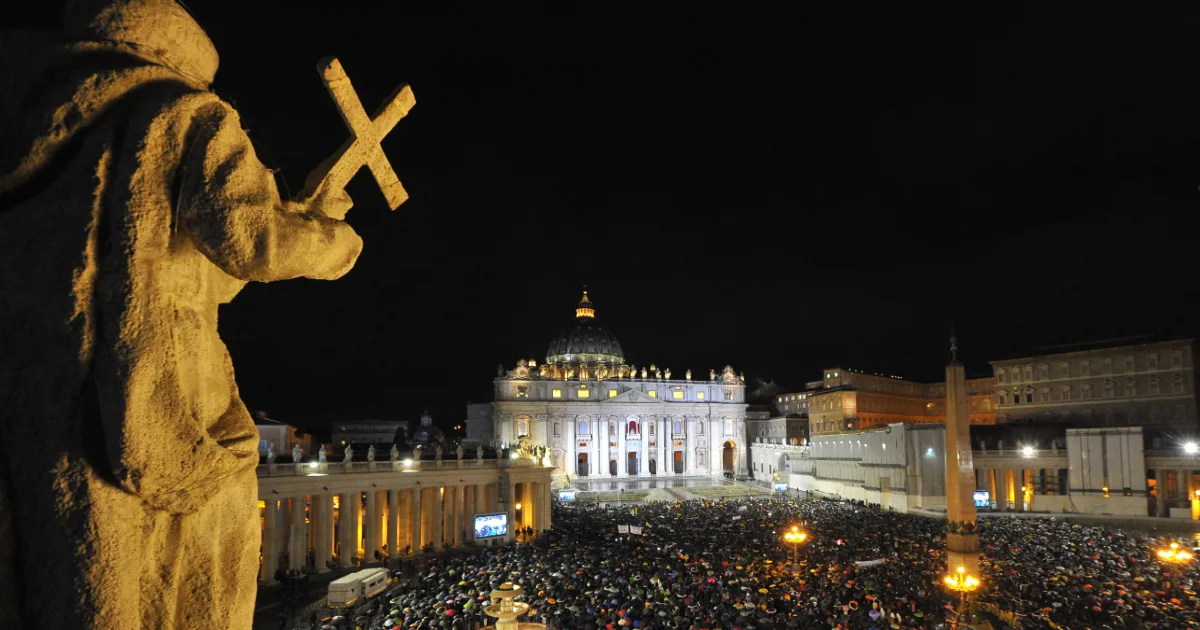Pope Francis, the Roman Catholic Church’s leader for the last 12 years, died at age 88 on Monday.
In the days following a pope’s death or resignation, the Vatican is tasked with both honoring the former pontiff — in the case of death — and finding a new religious leader.
Here’s what happens when a papal vacancy occurs:
After a pope’s death is confirmed by the camerlengo, the personal representative of the Sacred College of Cardinals, the funeral process begins.
Before the pope is taken to the Sistine Chapel, where he lies in state for public viewing, his body is treated and dressed in proper crimson burial garb, according to the Christian Broadcasting Network.
Traditionally, the pope’s internment, which takes place between four and six days following his death, occurs after a traditional Roman Catholic funeral Mass officiated by the dean of the College of Cardinals. The pope is then entombed in the grottoes below St. Peter’s Basilica with three coffins: one made of cypress, one of lead and one of oak.
Then, a nine-day mourning period observed by the church begins. Each day, an honorary Mass is celebrated for the deceased pope in Rome, led by a different cardinal every day.
In November, however, Pope Francis approved new funeral papal funeral rights meant to simplify the ritual and reflect the pope’s status as humble pastor instead of a powerful figure, eliminating traditions like the construction of the three papal burial coffins. Instead, popes will be buried in a simple coffin made of wood and lead.
Additionally, he allowed future popes to be buried outside St. Peter’s at their request, fulfilling his own desire to be buried in Santa Maria Maggiore basilica in Rome.
A papal conclave refers to the gathering of cardinals shortly following a pope’s death or resignation for the purpose of electing a new pontiff.
A conclave lasts until a new pope is elected.
Only cardinals under the age of 80 are eligible to vote for a new pope, according to the United States Conference of Catholic Bishops.
The number of cardinals participating in the vote is limited to 120.
Traditionally, cardinals assemble in the Sistine Chapel at the Vatican Palace 15-20 days after the cessation of a pope’s reign to vote on the next pontiff and remain secluded there until one is elected.
The cardinals participate in a secret vote once on the first day of the conclave and four times on each subsequent day — twice in the morning, and twice in the evening — until a candidate receives a two-thirds majority vote.
Each new pope is elected for life.
According to the Archdiocese of Boston, Pope John Paul II introduced a change to the voting process in which a candidate may win by simple majority if no new pontiff is chosen through the first phase of the conclave, which lasts about 12 or 13 days. At that point, the next pope may be selected by simple majority, and the options may be limited to the top-two vote-getters.
Technically, any baptized Catholic man can be elected to the papacy. However, according to the Eternal Word Television Network — a U.S.-based Catholic cable network — only cardinals have been chosen to be the next pope since the 16th century.
Immediately after each papal vote, the ballots and any relevant notes are burned.
Generally, cardinals participating in the conclave burn chemical additives with the ballots to alter the color of the smoke that exits the palace’s chimney and alerts the crowds waiting outside of the vote’s status. White smoke means a new pope has been elected; black smoke means another vote must be held.

White smoke rises from the chimney on the roof of the Sistine Chapel, meaning that cardinals elected a new pope on the second day of their secret conclave on March 13, 2013, at the Vatican. (VINCENZO PINTO,VINCENZO PINTO/AFP via Getty Images)
